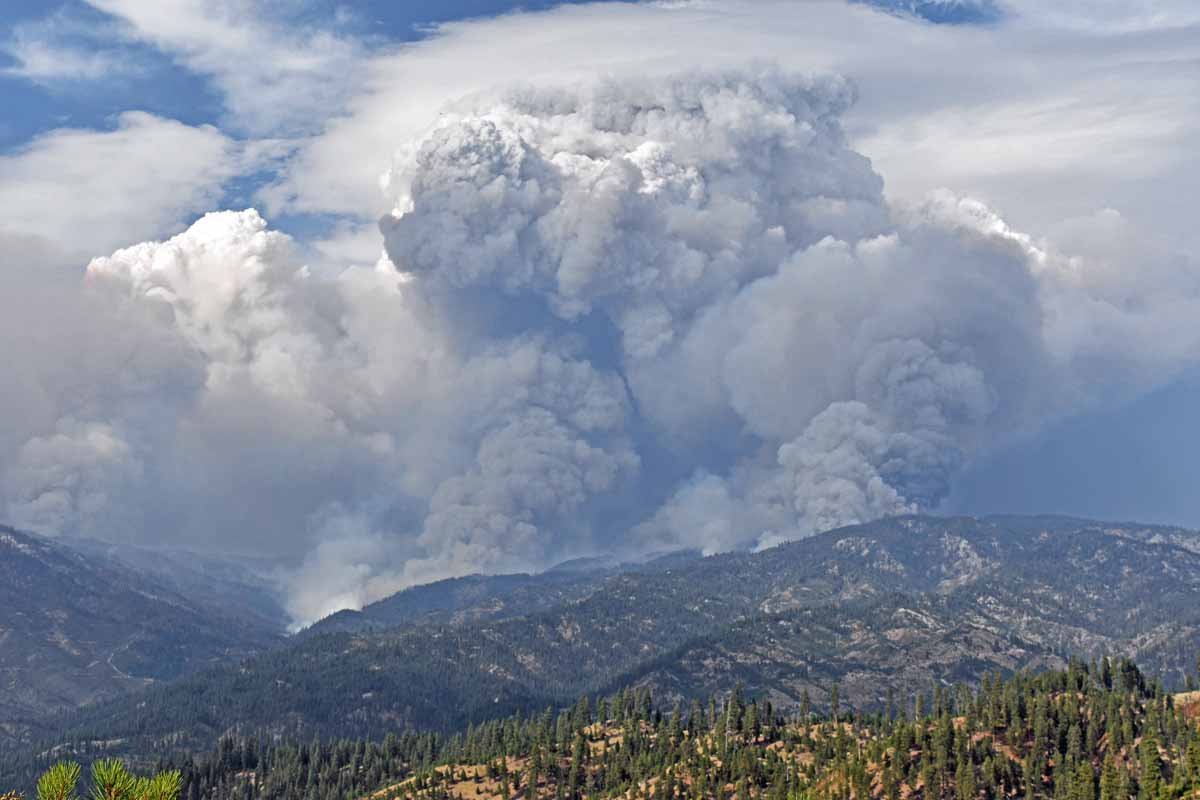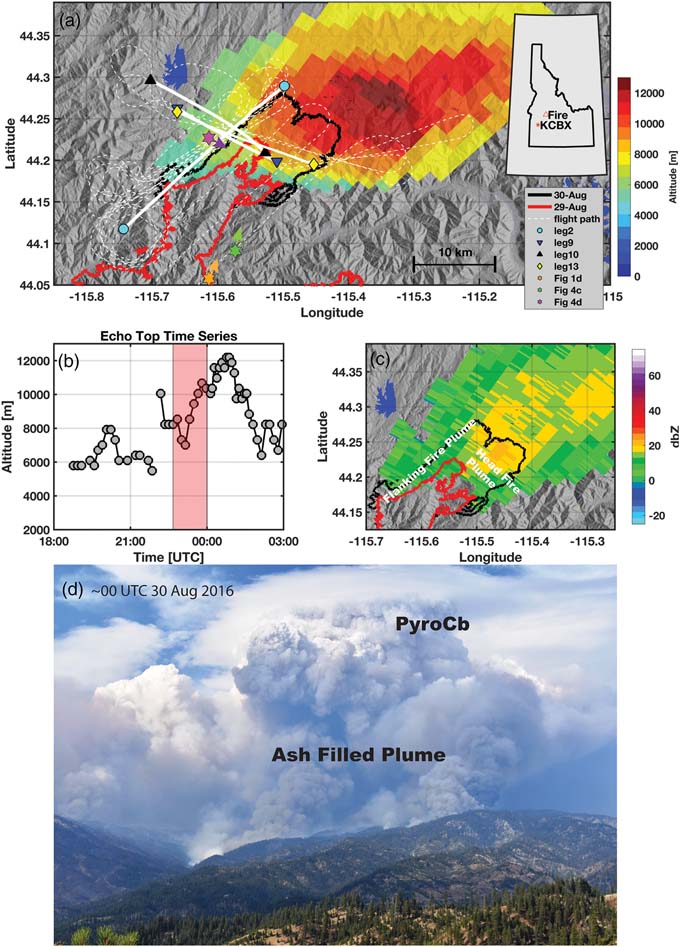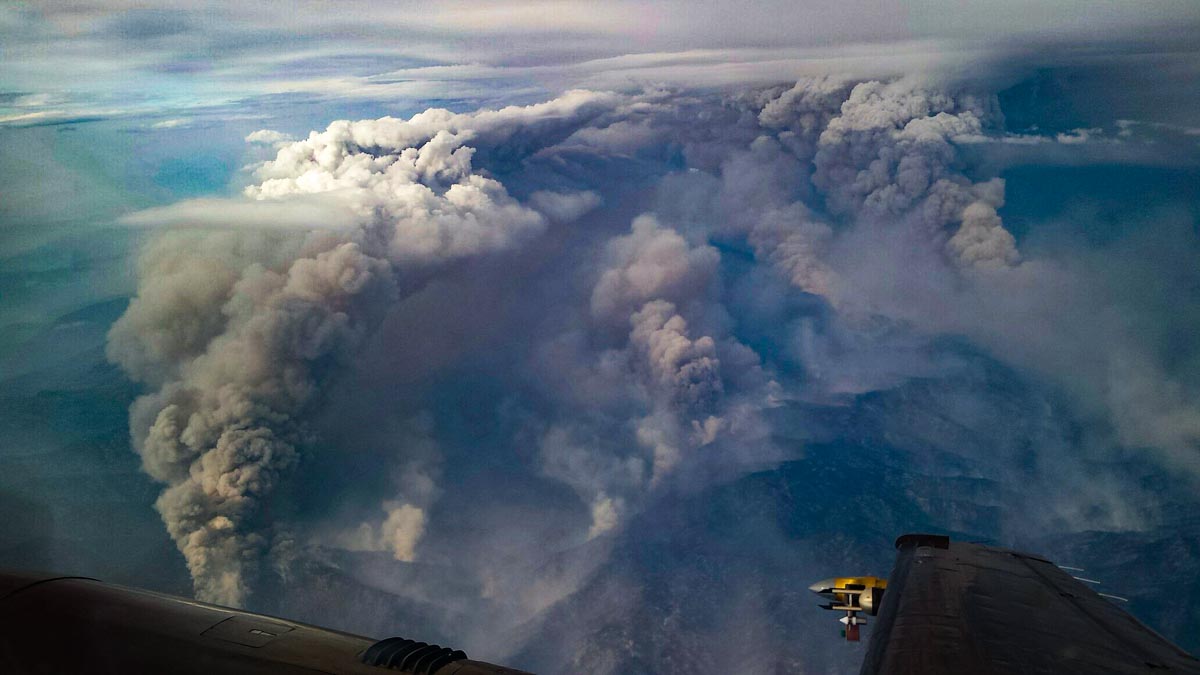
Researchers flying near smoke plumes over a large wildfire found extreme updrafts up to 130 mph and downdrafts reaching 65 mph. Operating radar and other sensing equipment in a small plane, one of the scientists was injured as the aircraft experienced a dramatic vertical displacement as it penetrated a 34-meters-per-second updraft in a plume over a flank of the 2016 Pioneer Fire in Idaho.
This is the first time the vertical velocity structure of a pyroconvective updraft has been viewed in such detail. The research showed that intense fires can produce updrafts that rival or exceed those in tornadic supercell thunderstorms.
An unexpected finding was that the updrafts strengthened with height above the surface, at least initially, challenging the assumption that they should decelerate with height.
The updrafts, the strongest ever documented, can be a hazard to aviation since they do not always show up on pilots’ weather avoidance radars, as discovered during a Qantas flight over a bush fire in Australia in January, 2020. Passengers experienced turbulence and darkness as the airliner entered the pyrocumulus cloud.
"There was one guy sort of swearing … I heard people down the front vomiting." Another passenger said it was "the scariest flight" she had taken.

These findings are presented in a paper published September 9, 2020 written by B. Rodriguez, N. P. Lareau, D. E. Kingsmill, and C. B. Clements.


Is this the same as volcano plumes? I lived south of MtStHelens when it was active. Thanks.
Quite! But pilots are often not scientists. Why not put the familiar unit in (parentheses)?
Most aircraft instruments indicated vertical speed in feet per minute (fpm).
True, but this is a scientific paper that has more to do with weather a phenomenon associated with a fire than with aviation. SI, or metric units, are the standard for most scientific publications.
For reference: https://www.nist.gov/pml/weights-and-measures/metric-si/si-units